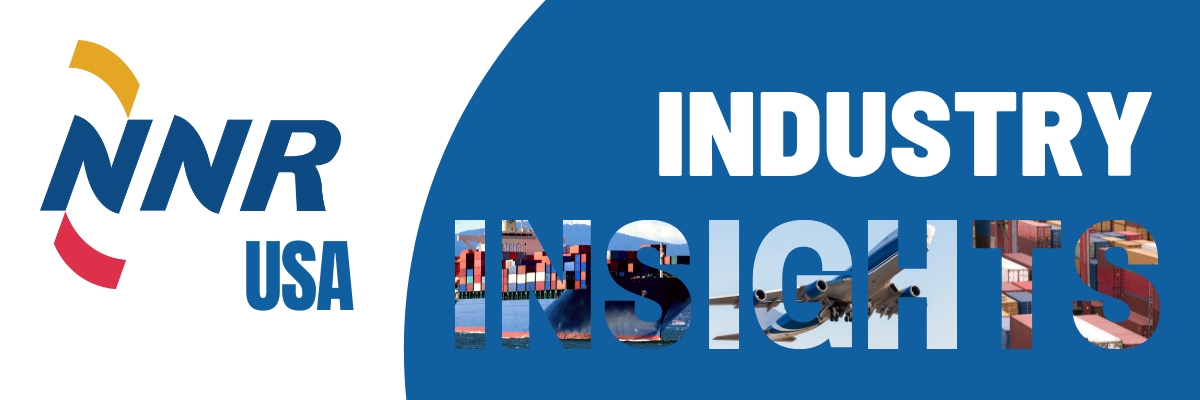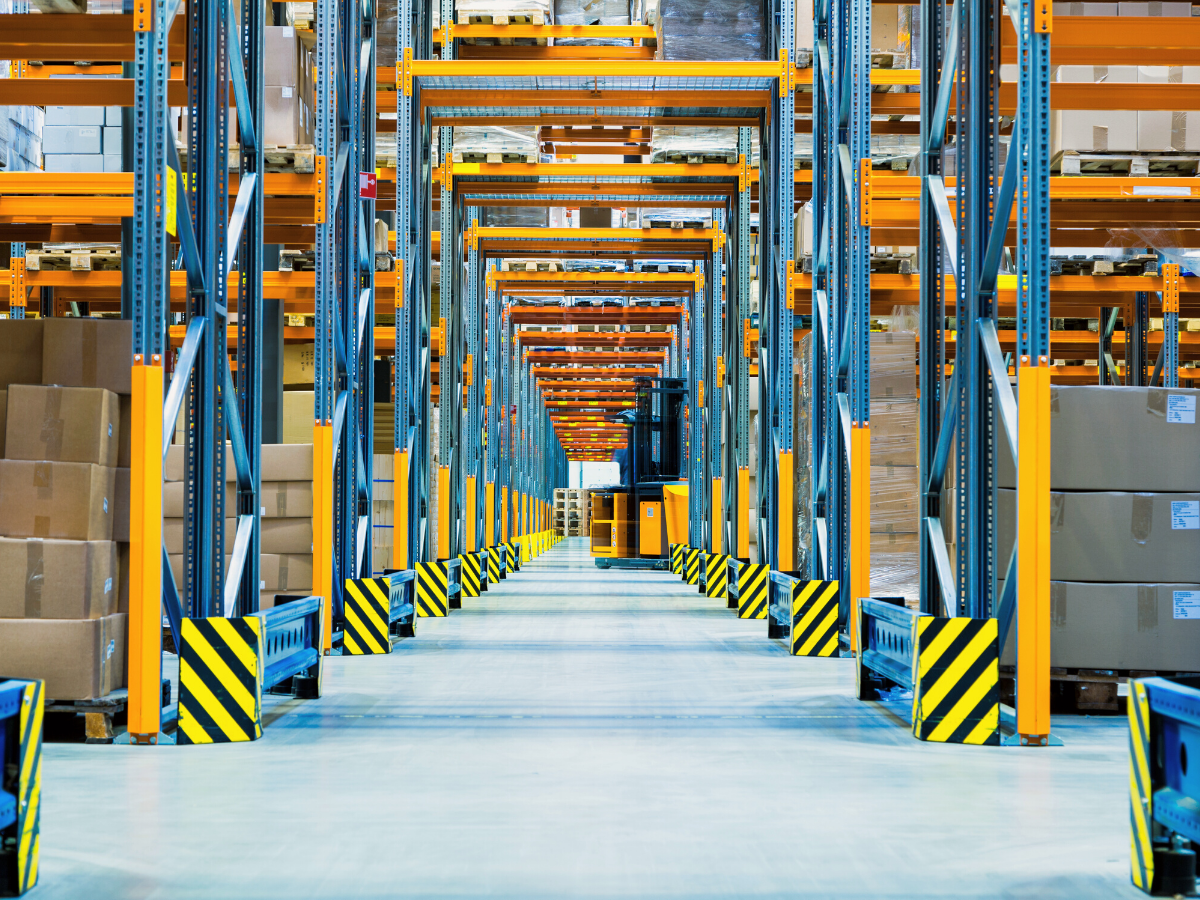
January 2022
By NNR USA In Uncategorised On 13th January 2022
2021 Recap
The infinite surprises of 2020-21, including Covid-19, helped define the year as one of the most challenging in global trade.
The global supply chain was disrupted on all fronts impacting every aspect of the business, including port congestion, space issues, inflation concerns, and final mile delivery issues. The big lesson learned is that there are some things that we are just unable to forecast. Some of the key differentiators during disruptions are flexibility, transparency, and open communication with your business partners.
While disruption and uncertainty will continue into FY22, the NNR team will be here to walk alongside each of our clients, offering market updates and ongoing contingency plans to minimize disruptions and hopefully have a less challenging 2022.
Mark Williams, Head of Sales Operations & Strategy
AIR FREIGHT

Tip of the Month
The new year is the perfect time to review your International Freight Forwarder, here are some questions to consider:
- What is most important for you: price, service, global footprint?
- Does your cargo need special handling?
- Do you communicate regularly, transparently with your freight forwarder?
- Are they providing you with multiple options?
- How fast do they respond with a freight quote?
Will we see the end of the tunnel soon?
It's a new year, but the same situation. The air freight industry will continue to face disruptions that create a perfect recipe for a rough start to 2022.
Notable Disruptions
- Busy holiday season with retail sales increasing by 6.9%.
- Airfreight rates are still high on the major trade lanes, especially from Asia to North America.
- Supply chain bottlenecks not resolved with continuous ground congestion.
- Unit Load Device (ULD – Air pallets) shortages due to ground handling backlog in major U.S. gateways (Chicago, Los Angeles, and New York.)
- High staffing shortages due to increased spread of Omicron.
- Hong Kong passenger restriction for eight countries including the U.S., U.K., Australia, Canada, France, India, Pakistan, and the Philippines from Jan. 8th to Jan. 21st will potentially reduce space and capacity by 40%.
- Expect flight cancellations with the upcoming Chinese New Year holiday starting on Feb. 1st and the Beijing Winter Olympics on Feb. 20th.
Demand & Capacity
- Compared to last year, demand decreased by 5% because air cargo cannot be pushed through the supply chain due to airport congestion.
- According to Clive Data Services, air freight capacity decreased by 12% compared to last year.
- Cargo air carriers are expanding their freighter fleets in 2022: Atlas Air, National, Cargojet, UPS.
OCEAN FREIGHT

Tip of the Month
Book 4-5 weeks in advance and use alternative ports to navigate the current situation.
2022 Shows no signs of slowdown or improvement to challenges faced in 2021
Despite peak season’s slowdown, shippers are still struggling to find space and equipment. Covid variants are causing delays for factory production due to shutdowns caused by a labor shortage since workers are in quarantine. The upcoming Chinese New Year holiday has put a rush on shipping urgent cargo in January to avoid holiday-related delays.
Notable Disruptions & Port Updates
- Ports of Los Angeles, Long Beach
- Postponed the "Container Dwell Fee" until Jan 17 due to a 45% improvement in dwell time since announcing the fee back in Oct 2021.
- Now considering a similar dwell fee effective Jan 30 on high dwelling empty containers taking up much-needed terminal space.
- China has a new wave of Covid which impacts cargo production and creates bottleneck congestion due to a strict policy of zero-Covid implemented by local authorities.
- South China Feeder Services will be suspended for Chinese New Year, causing shipping disruption.
- USA congestion is still recovering after the holidays while also being impacted by winter conditions causing delays and suspension of operations, especially for rail moves to and from ports.
DOMESTIC TRANSPORTATION & WAREHOUSE

2022 Will Present Challenges to LTL/TL Shipping
What can we expect the market to look like this year? There will continue to be significant challenges before the market returns to "normal."
In categorizing these challenges, it breaks down into three main areas of concern: Driver Shortages, Infrastructure, and Equipment Shortages.
If we can quickly navigate the current outbreak of Covid-19, the government is forecasting a 3.5% growth to the GDP. This level of growth, along with capacity issues, leads to the belief that service levels will take time to improve and carrier rates will continue to rise.
Trucking rates will continue to rise as most carriers are faced with driver shortages.
The combination of an aging workforce, low unemployment, and the current regulation requiring a driver to be 21 prior to receiving their commercial driver's license have all contributed to the current shortage. Companies are exploring many ways to meet their need for drivers, but the current driver shortage is still a long way from being resolved.
The government has finally acknowledged the need to address the aging infrastructure. Aging roads and bridges, antiquated port and railroad material handling equipment, and the slow adoption of technology solutions have brought these issues to light. All these factors have been cited by drivers leaving the workforce. Many complain they spend as much time stationary. The USD 1.2 billion Infrastructure Act recently passed the U.S. Congress, but it will be years before the investment will improve the existing infrastructure. In the meantime, there will be additional delays as construction projects are started across the United States. We anticipate these projects will bring delays as trucks and rail containers need to be re-routed around construction zones.
There are also numerous equipment shortages across the supply chain. The equipment shortages range from chassis shortages at most major ports and railheads to slow production on Class 8 trucks. Supply chain constraints on chips, steel, and other imports have slowed production for most manufacturers of these trucks. This has led to a 67% increase in the price of new power units in 2021.
To navigate these shortages, we are advising our partners to keep an open mind, work on creative solutions supported by sound practices and focus on tracking their vendors' successes and failures to allow for an easy pivot to a new way of doing business.

Execution and Compliance are Keys to 2022 Success
In preparing for 2022, logistics executives should focus on some critical questions. Do we have an omni-channel strategy? Does our team understand FBA of the other e-commerce marketplaces? Are we positioned to execute management's operational strategy? Can we measure and report our success?
2021 saw many changes to the traditional warehousing landscape. Organizations continued to move away from positioning large buildings in the country's center. The continued growth of warehouses closer to ports or large customer populations supports two-day or less delivery windows. More of their competitors are taking final mile delivery in-house. Labor shortages will continue for the foreseeable future.
The critical question facing all supply chain executives is finding the correct niche to benefit their customers. Are they in that niche? Can they execute on the strategy, and do their teams have the right skill set?
If you are serving the consumer sector, does everyone understand how to work with Amazon? Amazon will continue to dominate for the foreseeable future, so it is critical that your teams and processes understand how to navigate the FBA, Vendor Central, and Amazon fulfillment practices. Does someone on your team read, understand and communicate the way to stay compliant with your customer and the major e-commerce marketplaces? Have you begun your final mile implementation? Small package carriers have run out of capacity, so many companies are forming their final mile delivery networks. This is another contributing factor to driver and labor shortages, and more and more drivers are needed locally to meet the 2-day delivery standard that Amazon Prime has set.
It has been said that people are your most valuable asset. In many major U.S. labor markets, warehouse wages rose between $2 to 7 dollars an hour. Even these increases were not enough to guarantee a steady workforce. Walmart and Amazon began giving their associates educational and entrepreneurial benefits that had not been seen previously in warehouses. It has forced many warehouses to look at how they will retain their top performers next year and in the future. These discussions should be ongoing at the warehouse floor and management levels. As more workers leave the workforce, creative solutions will require a shift away from traditional thoughts on warehouse duties and hours. Not addressing this problem will put many companies in the position of relying on transitory temp labor who should not be expected to perform at the levels of a well-trained staff.
The challenges facing supply chain executives have never been tougher. Covid 19 has brought issues to the forefront and made all of us look at how the business is managed. It will still come down to companies that measure and manage their processes. These are the companies that will have the information available to better understand their customers, competition, and staff. It has never been more important to execute, measure, and evaluate your process and team to make the corrections necessary for success.
CROSS-BORDER: USA-MEXICO-CANADA

Tip of the Month
U.S. Exporters may want to discuss Complemento Carta Porte requirements with their Mexican Importer to ensure all data elements are on-hand prior to shipping to Mexico.
What is Carta Porte?
Complemento "Carta Porte" is an annex to the Digitalized Tax Receipts (CFDI) that will help the Mexican tax authority (SAT by its Spanish acronym) certify the ownership/type of goods, origin/destination, mode of transportation.
Which shipments are subject to this requirement?
- All cross-border shipments in and out of Mexico, as well as shipments within Mexico via all modes, including train, truck, vessel, and airline.
Where will Carta Porte be enforced?
- Carta Porte will only be enforced within Mexican Territory.
At what point in the shipment process is Carta Porte required?
- Before the beginning of the shipment in Mexican Territory.
Who needs to submit Carta Porte to MX SAT?
- Owners of goods (who carry their own transportation of cargo in Mexico), direct providers of freight transportation and transportation intermediaries responsible for logistics services in Mexico (using their own equipment) will have to generate a CFDI with their Carta Porte.
- Customers are responsible for providing the required information on the waybill to the MX carriers/railroads so shipments can move into or within Mexican territory.
CUSTOMS BROKERAGE & TRADE COMPLIANCE

Tip of the Month
Review your tariff classification database or consider building one.
A database keeps your team on the same page with tariff numbers and streamlines internal trade compliance audits.
Wood Crate Air Cargo Screening Update
The 100% Air Cargo Screening Mandate has placed a heavy load on the industry. More and more airlines and their vendor screening services have moved to canine teams which require wood crates to be vented. Our compliance team provides tips on how to prep wood crates for air transport. Read More
Informed Compliance Publication Reorganized
U.S. Customs has reorganized their Informed Compliance Publication (ICP) webpage by industry to correspond with CBPs Centers of Excellence and Expertise.
ICPs provide valuable information to importers on a variety of trade compliance topics ranging from tariff classification to valuation.
FEATURE ARTICLE
When will GSP be Renewed?
The U.S. GSP program expired on December 31, 2020. It's the oldest and largest duty-free trade program aimed at increasing trade from emerging economies. Both U.S. importer and their suppliers are patiently awaiting its renewal.
Peter F. Killian, Customs Entry Writer, discusses the reason for the delay, and if we can expect GSP to be reinstated.
